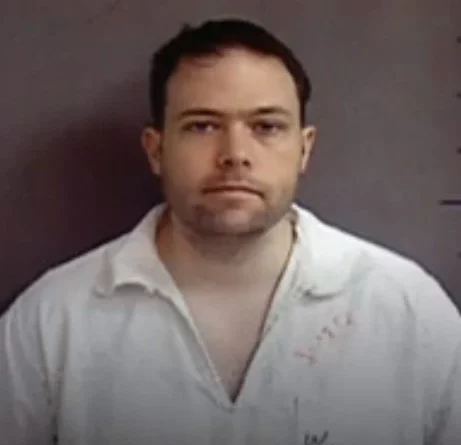Don Davis Jr. Assaulted Multiple Women at Texas A&M in Houston Texas
The legal battles surrounding Don Richard Davis Jr. have captivated public attention for decades. A graduate of Texas A&M University, Davis was charged with multiple counts of aggravated sexual assault, leading to a high-profile case that involved a dramatic escape, a nationwide manhunt, and a lengthy legal battle that extended beyond the initial conviction. His story is not only a tale of crime and justice but also a reflection of how the legal system handles high-profile sexual assault cases.
This article delves deep into the background, criminal proceedings, escape, trial, sentencing, appeals, and the lasting implications of Davis’s actions on victims and the legal system.
Background of Don Davis Jr.
Don Richard Davis Jr. was born into a relatively well-off family in Texas. He attended Texas A&M University, a prestigious institution known for its strong engineering and business programs. Prior to his legal troubles, Davis was an unassuming student with no major disciplinary issues recorded. However, beneath this normal exterior lay a dark side that would soon come to light.
His case first gained traction in 1995, when a series of sexual assaults were reported in the Texas A&M community. These incidents shocked the student body and surrounding areas, prompting a thorough investigation by law enforcement.
The Charges and Initial Arrest
In late 1995, authorities identified Don Davis Jr. as the prime suspect in at least two cases of aggravated sexual assault. According to police reports, two female students had reported being attacked in secluded areas of the Texas A&M campus. The assailant was described as a young man who threatened them with a knife before forcing them into non-consensual sexual acts.
Forensic evidence, including DNA collected from the victims, was crucial in linking Davis to the crimes. Investigators also uncovered disturbing patterns in Davis’s behavior, including reported harassment incidents before these attacks escalated into full-blown sexual assaults.
In January 1996, authorities arrested Davis and charged him with two counts of aggravated sexual assault. He was released on bail, under strict conditions that required him to stay with his family in Houston while awaiting trial.
The Escape and Manhunt
Despite the serious charges against him, Davis managed to flee just months before his trial was scheduled to begin. In August 1996, he failed to appear for a pretrial hearing. Authorities soon discovered that his father, Don Davis Sr., had helped him escape by providing him with money and a vehicle.
This act of aiding and abetting made national headlines, sparking outrage among law enforcement and victims’ advocacy groups. The elder Davis was later charged with hindering apprehension and convicted, serving jail time and probation for his role in the escape.
For the next several years, Davis managed to evade authorities, living under various aliases across different states. His case was featured on national crime programs, increasing public awareness and efforts to track him down.
The Arrest in Cleveland, Ohio
In October 2000, Davis’s luck finally ran out. He was pulled over during a routine traffic stop in Cleveland, Ohio. The officer, who found his behavior suspicious, ran his identification and discovered that he was a fugitive wanted in Texas.
At the time of his arrest, Davis had been working as a disc jockey at a strip club. Authorities later learned that he had been apprehended twice before under fake identities but was released before law enforcement could connect him to his real identity.
His capture marked the end of his four-year run from justice and set the stage for a high-profile trial in Texas.
The Trial and Conviction
After his extradition to Texas, Davis faced trial for the 1995 sexual assault cases. His defense team attempted to argue that the forensic evidence was inconclusive and that the victim statements were inconsistent. However, the prosecution presented irrefutable DNA evidence that linked him to the crimes.
In May 2001, Davis pleaded guilty to two counts of aggravated sexual assault. The jury sentenced him to 99 years in prison and imposed a $10,000 fine for each count.
During the trial, victim impact statements played a crucial role. The survivors testified about the psychological and emotional trauma they endured, emphasizing the long-lasting consequences of Davis’s crimes.
Appeals and Legal Challenges
Following his conviction, Davis filed multiple appeals, arguing that his trial had been unfair and that the jury had been improperly instructed about parole and good-conduct time. His legal team attempted to challenge the constitutionality of the sentencing process, claiming that jurors were misled about his potential eligibility for parole.
However, the Texas Court of Appeals rejected his claims, upholding the original conviction and sentence. The ruling reaffirmed the severity of his crimes and the appropriateness of the jury’s decision.
Despite further legal efforts, Davis remains incarcerated, serving out his 99-year sentence.
Civil Litigation Against Texas A&M University
In a surprising twist, Davis’s parents, Don Davis Sr. and Linda Davis, filed a $25 million federal lawsuit against Texas A&M University, Brazos County prosecutors, and university police. They alleged that their due process rights were violated and claimed that law enforcement had used them as “bait” to secure Davis’s return.
This lawsuit raised questions about the extent of law enforcement tactics in high-profile cases and the ethical boundaries of legal investigations. While the federal judge declined to dismiss the case outright, it ultimately did not result in any substantial changes to the way universities handle campus crimes.
The Broader Impact of the Case
The case of Don Davis Jr. had far-reaching implications beyond his personal fate. It brought attention to several important issues:
1. The Importance of DNA Evidence in Sexual Assault Cases
The use of DNA evidence was crucial in securing Davis’s conviction. His case underscored the significance of forensic science in proving guilt beyond a reasonable doubt.
2. The Role of Universities in Addressing Campus Sexual Assault
The assaults took place on a college campus, raising questions about what Texas A&M and other universities should do to protect students and respond to sexual violence.
3. The Challenges of Tracking and Apprehending Fugitives
Davis’s ability to evade authorities for years highlighted the difficulties law enforcement faces in tracking suspects who go into hiding. His case became a lesson in how fugitive tracking systems could be improved.
4. Victims’ Rights and Legal Protections
The survivors’ testimonies played a pivotal role in securing Davis’s sentence. This case helped reinforce the importance of victim rights and legal protections for those affected by sexual assault.
Conclusion
The case of Don Davis Jr. is a stark reminder of the devastating effects of sexual violence and the importance of a strong legal system in bringing perpetrators to justice. From his initial crimes and dramatic escape to his eventual conviction and failed appeals, Davis’s story is one of accountability, justice, and lessons learned.
While Davis remains behind bars, the survivors of his crimes continue their journeys toward healing. Their bravery in speaking out and seeking justice has helped shape legal precedents and brought awareness to critical issues surrounding sexual violence.
As discussions around campus safety, fugitive tracking, and victims’ rights continue to evolve, this case serves as a crucial reference point for law enforcement, legal professionals, and advocacy groups working to create a safer society.
Discover more from City Towner
Subscribe to get the latest posts sent to your email.




